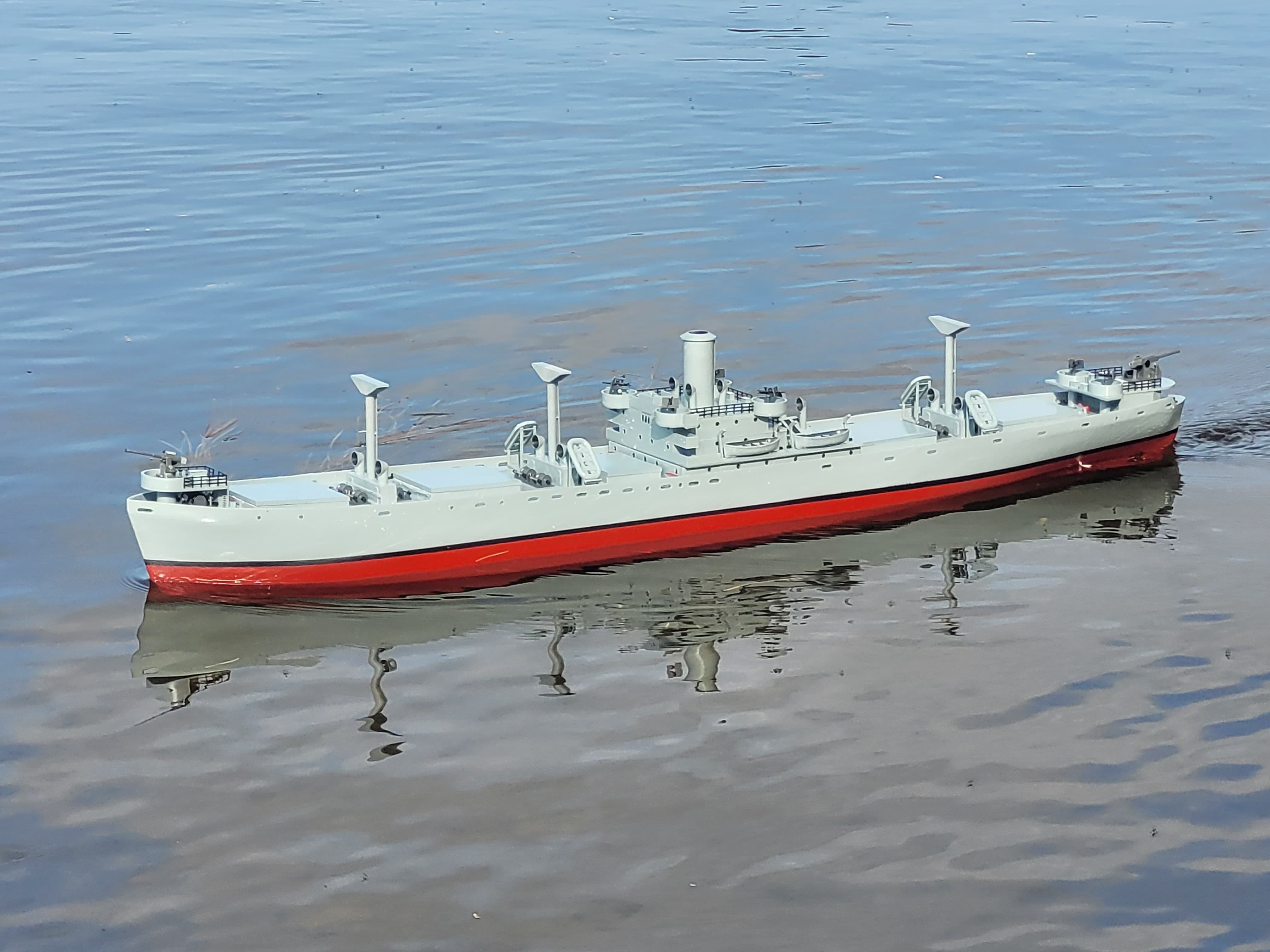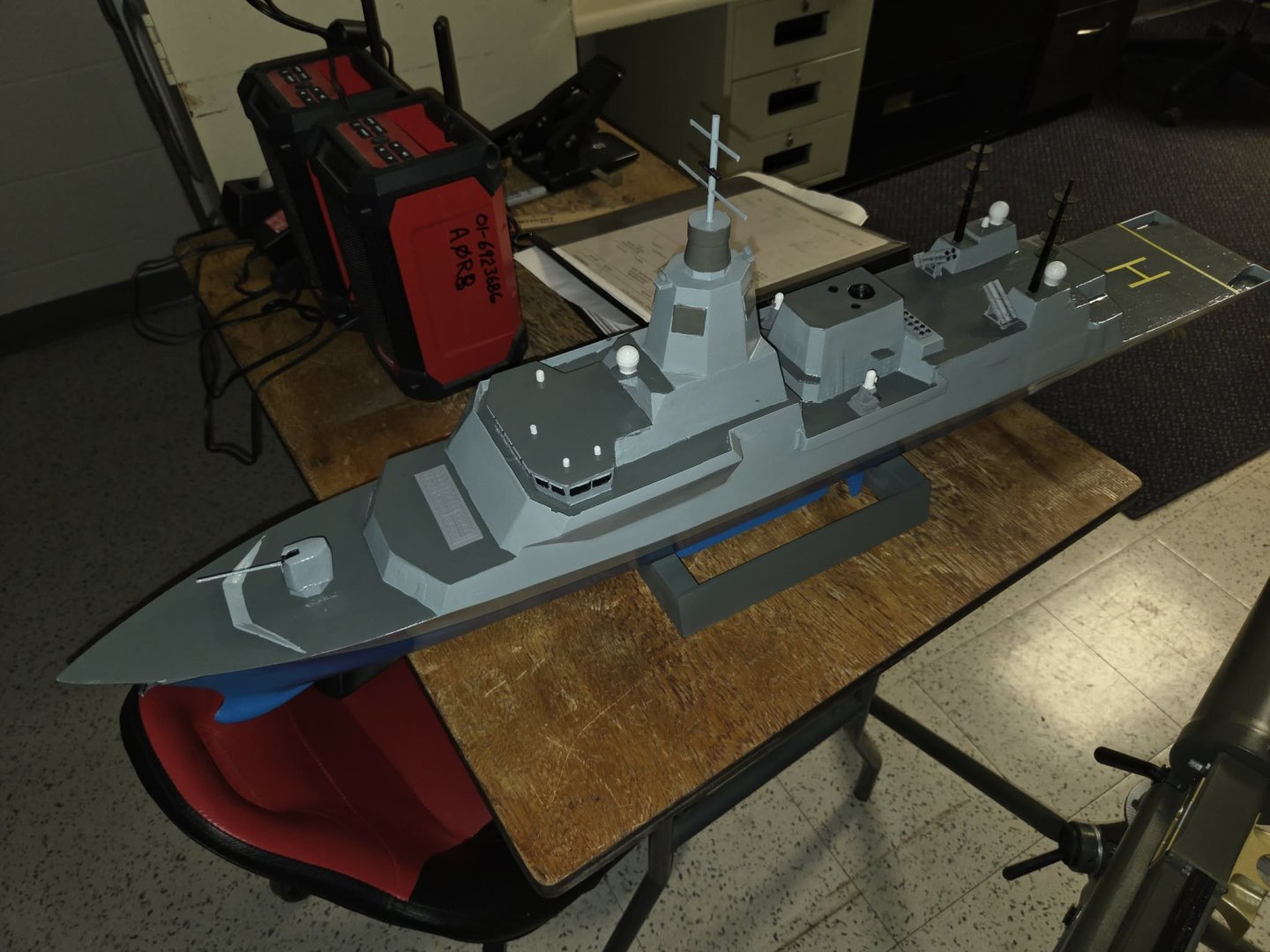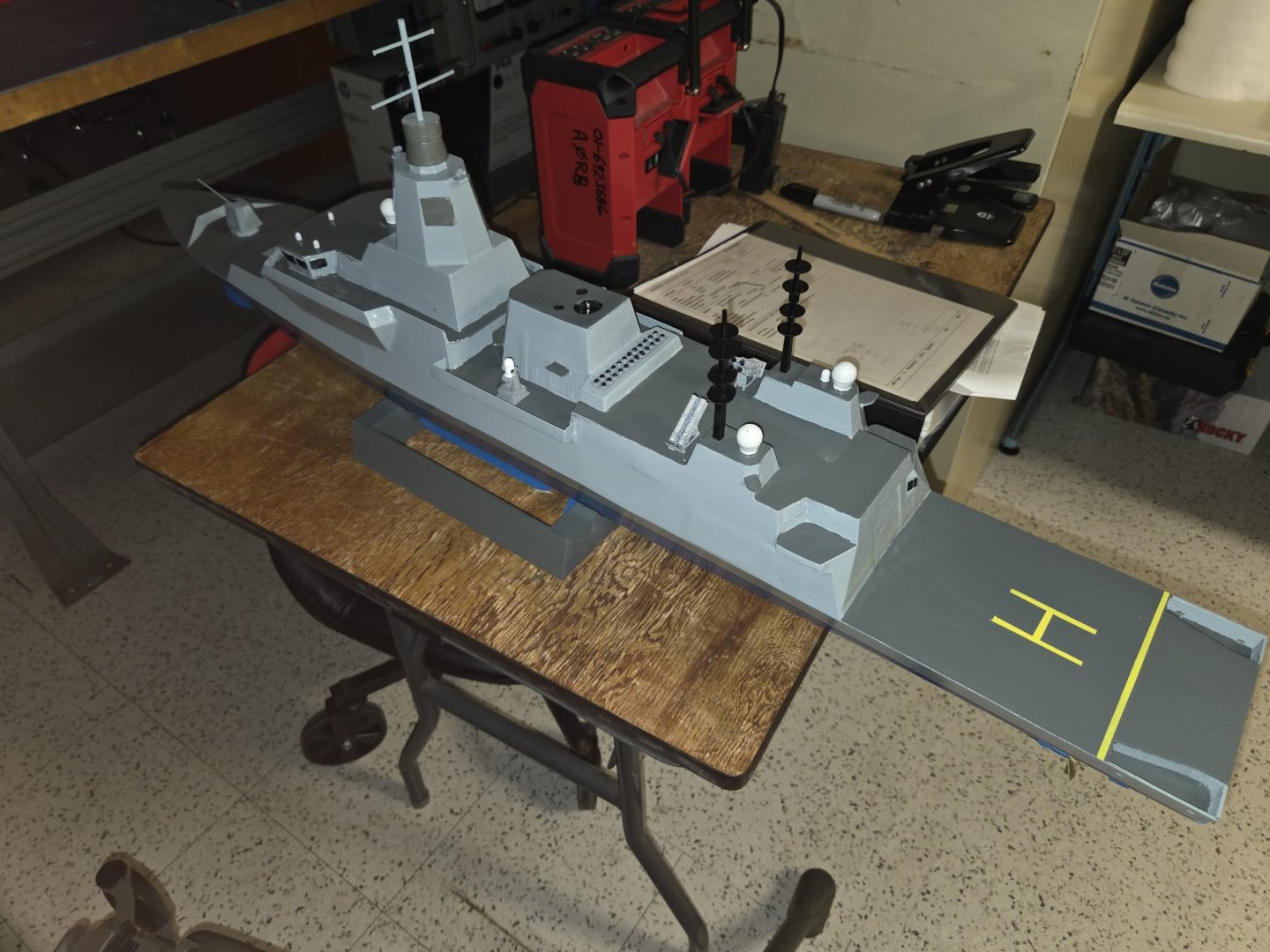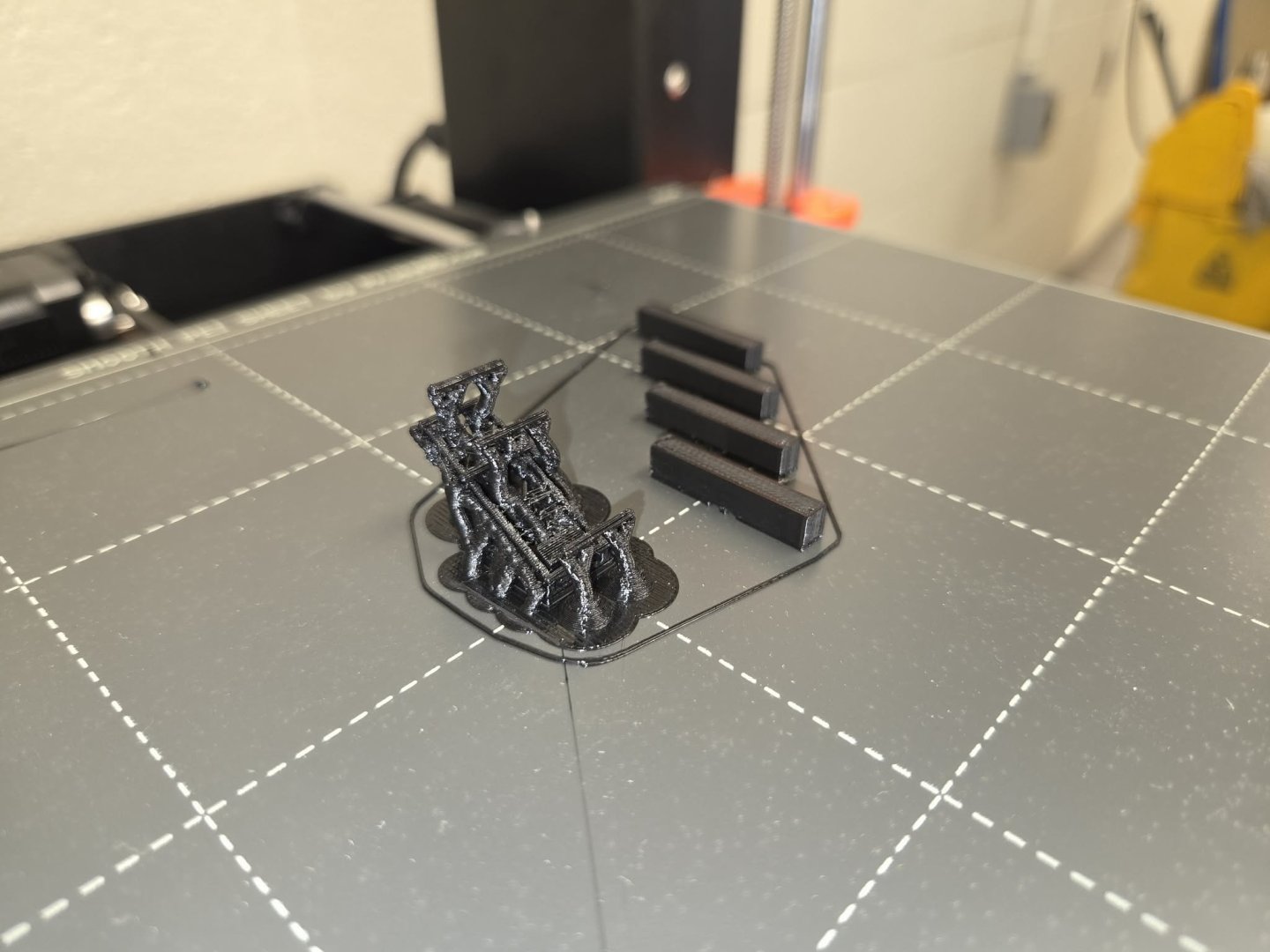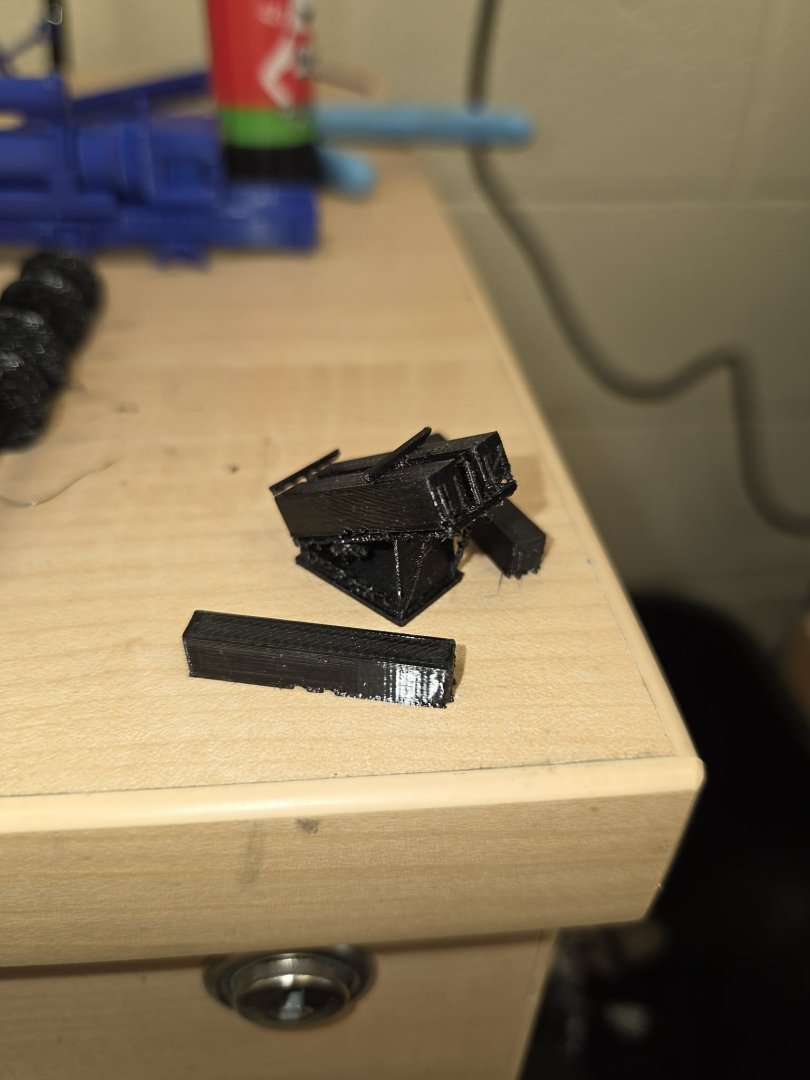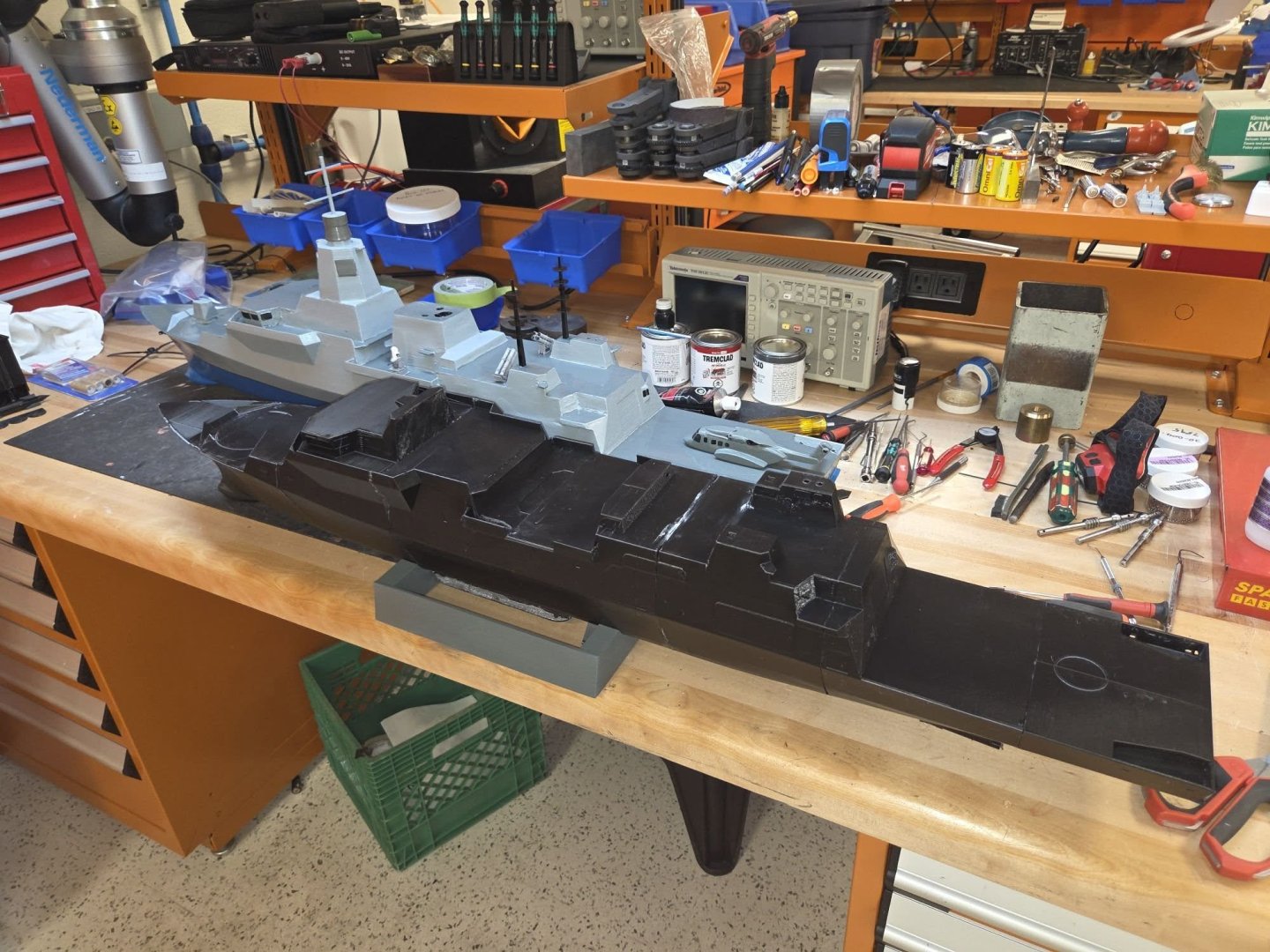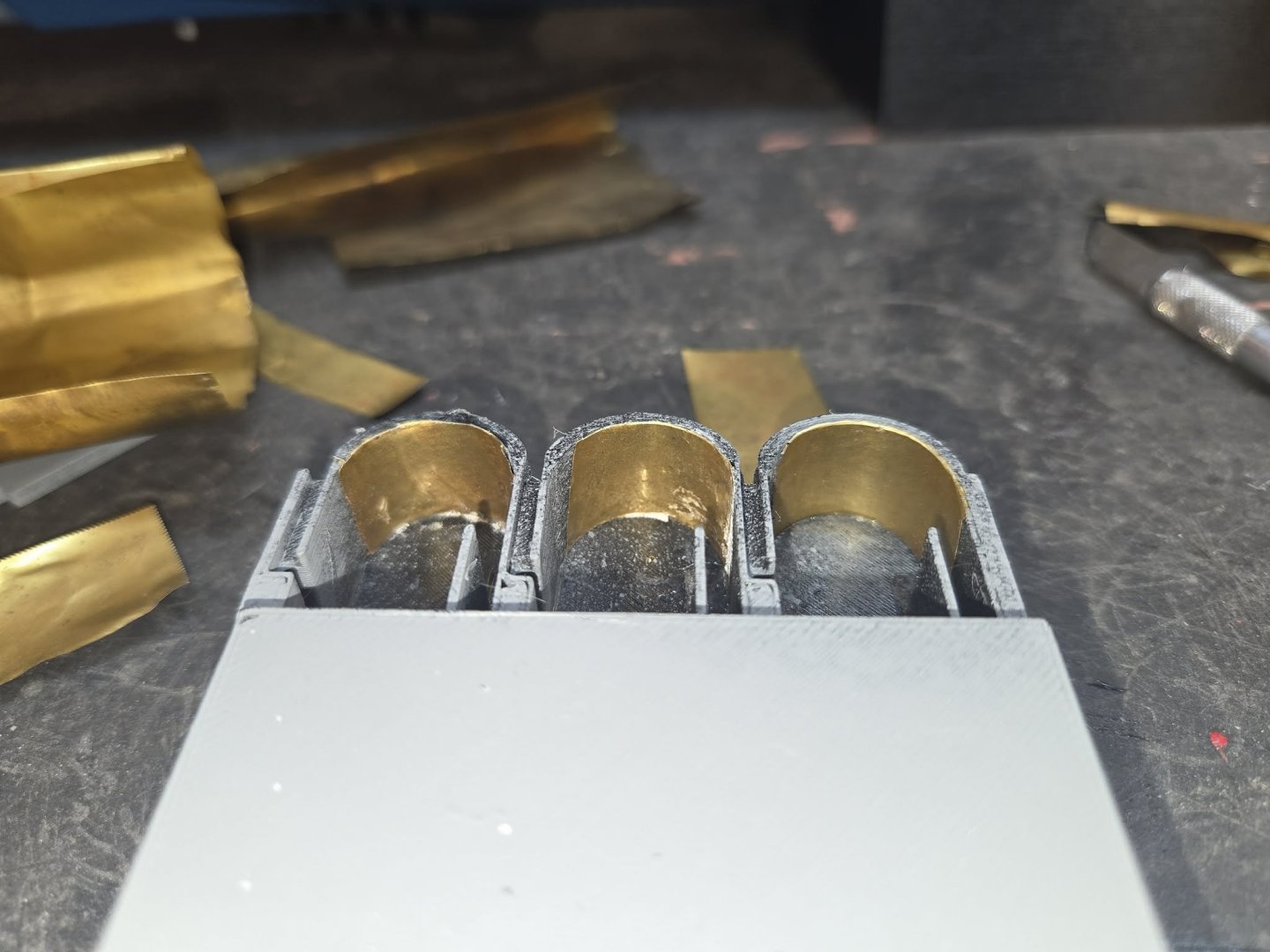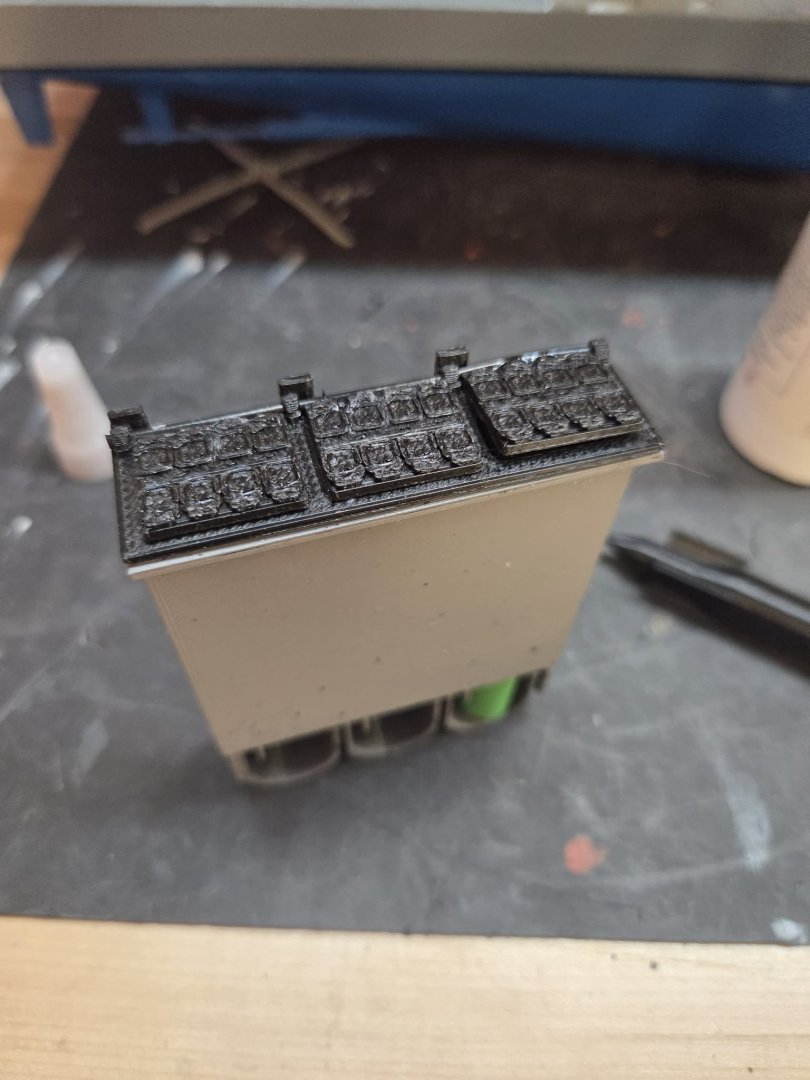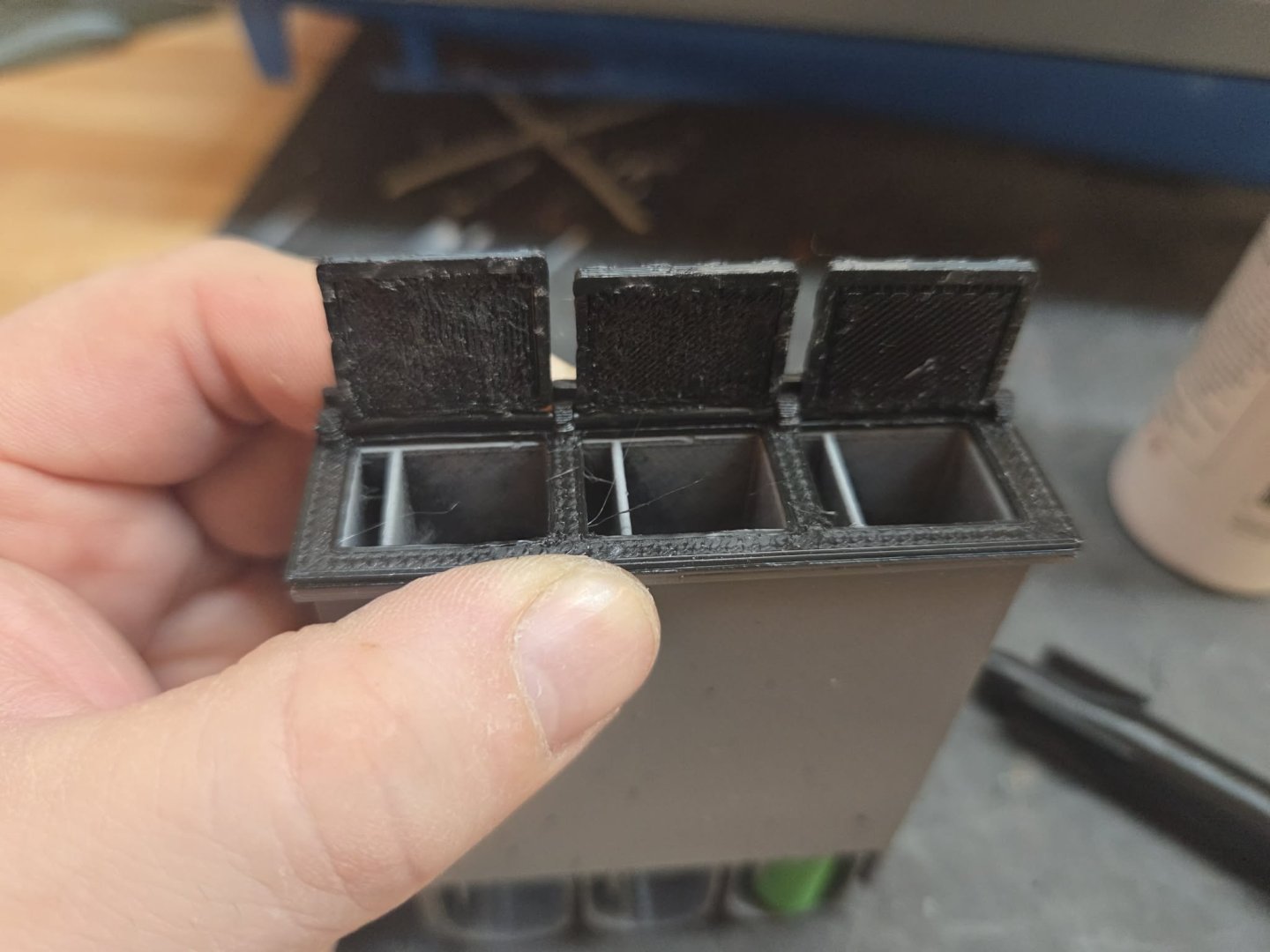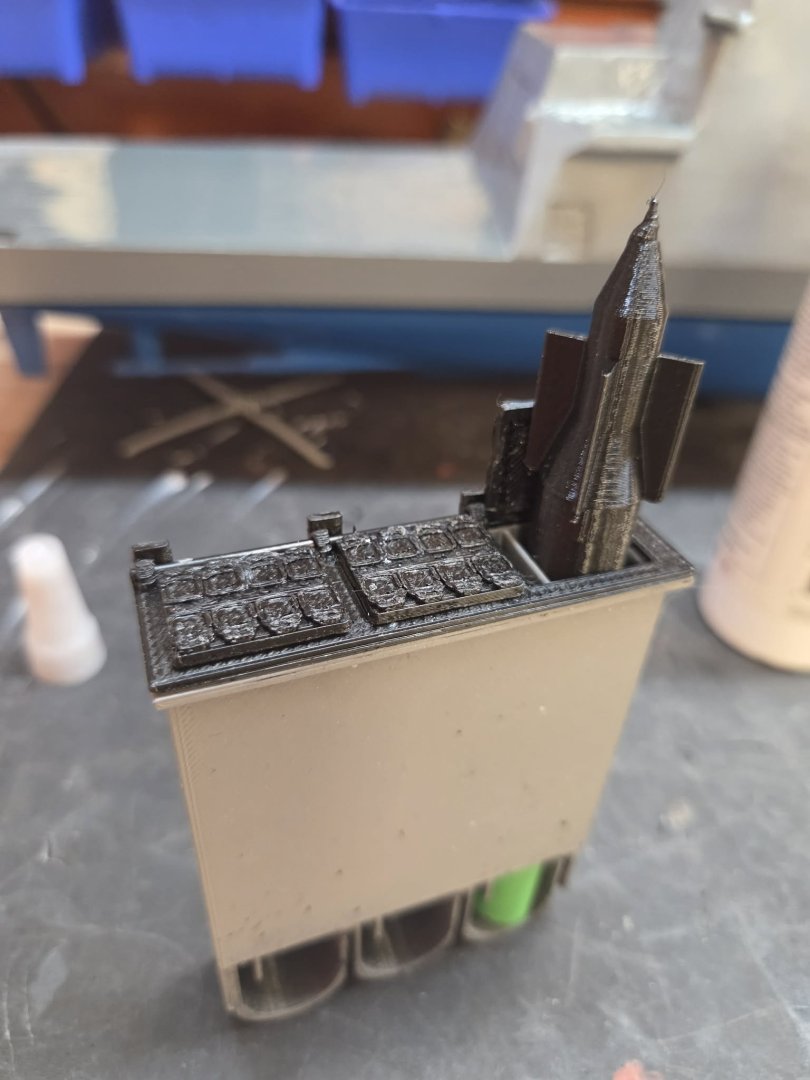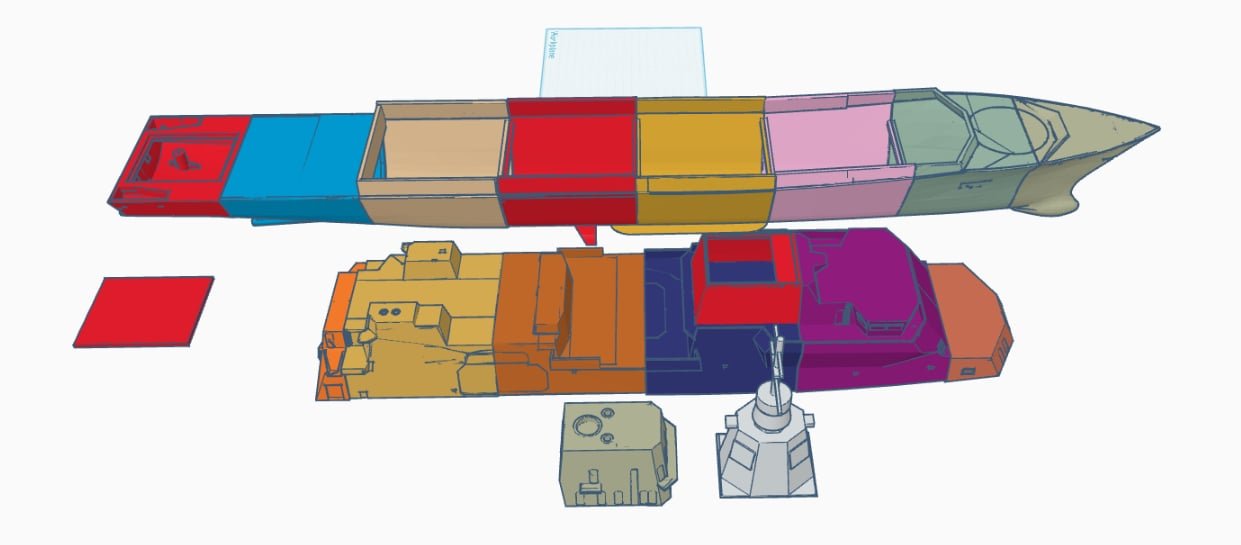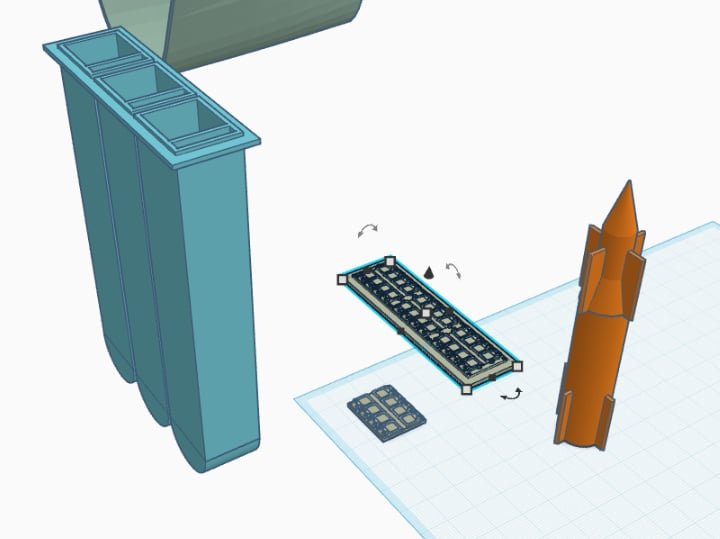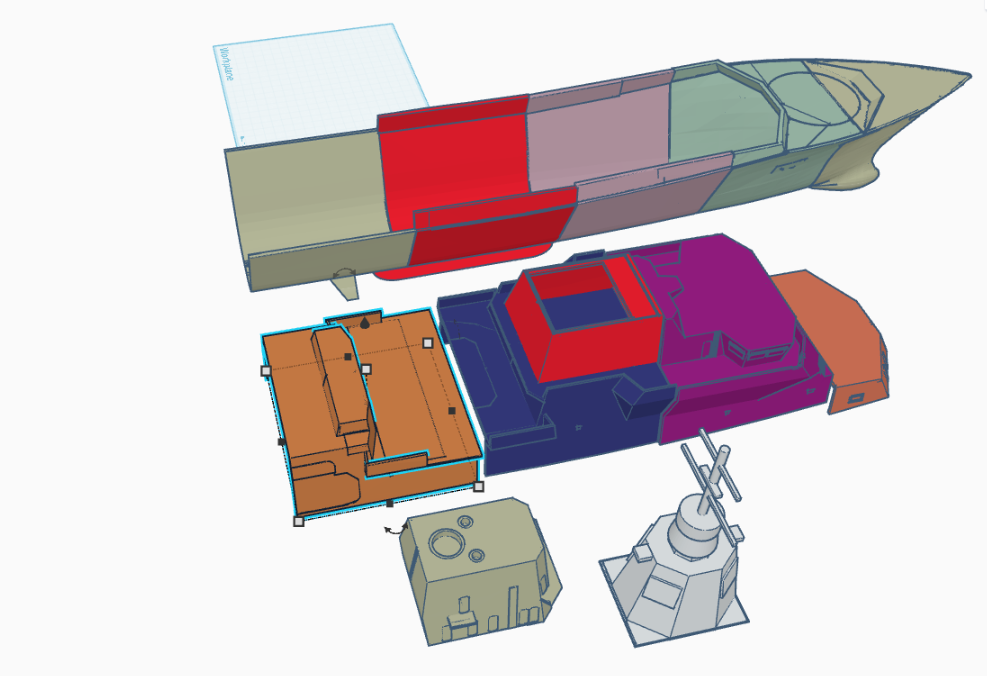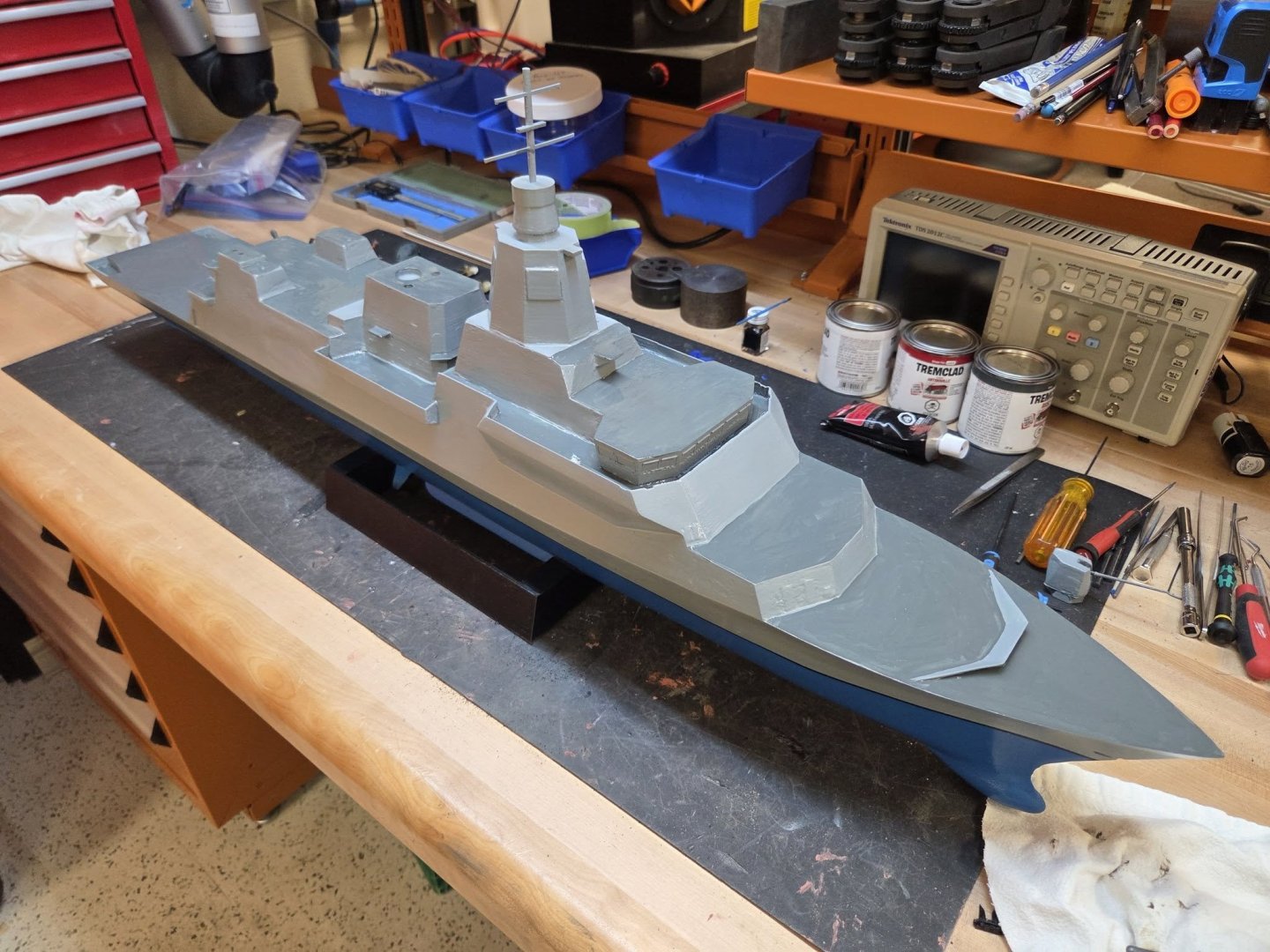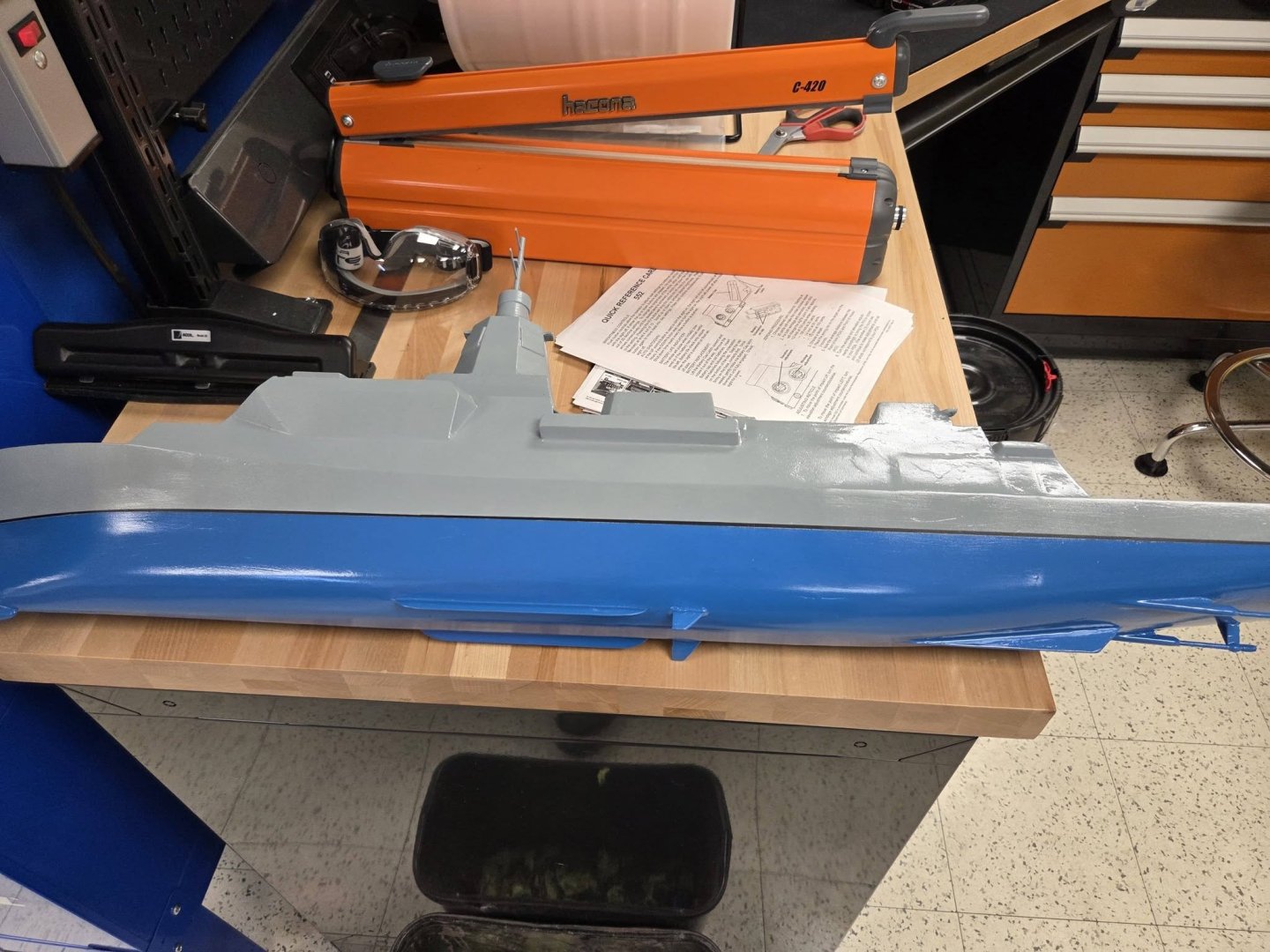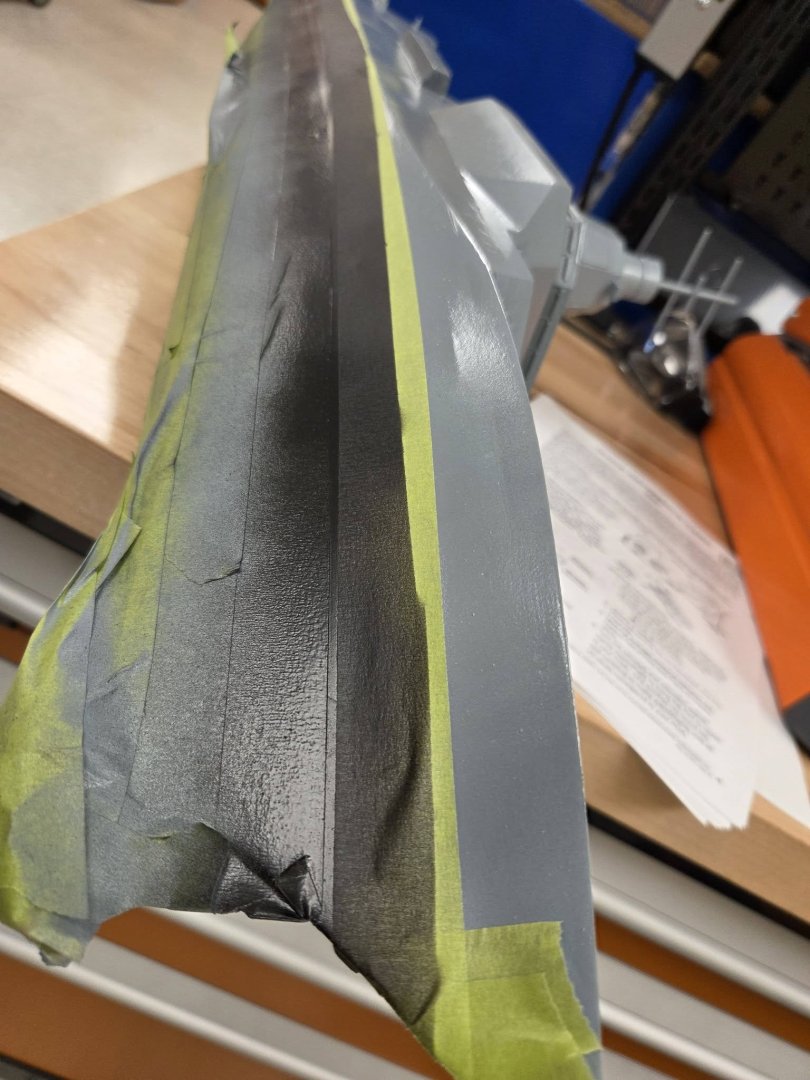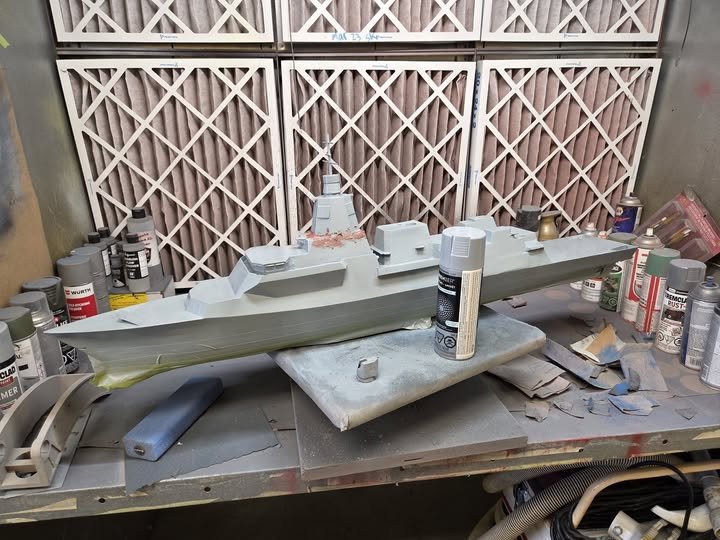-
Posts
686 -
Joined
-
Last visited
Content Type
Profiles
Forums
Gallery
Events
Everything posted by NavyShooter
-
I understand that the 'newest version' may actually have RIM-114 missiles in the 21 packs instead of CIWS. The armament mix is still a bit in flux - I hear that the 5" gun is changing as well from Leonardo to the USN version due to AEGIS integration simplification issues. (Adding a non-US 5" gun would require an adapter in the middle between AEGIS and the gun interface - all of which would require testing/certification that Canada is trying to avoid. Getting the US 5" gun that's already certified with AEGIS is a low risk solution.)
- 47 replies
-
- Type 26
- City Class
-
(and 2 more)
Tagged with:
-
- 47 replies
-
- Type 26
- City Class
-
(and 2 more)
Tagged with:
-
- 47 replies
-
- Type 26
- City Class
-
(and 2 more)
Tagged with:
-
So, the first one of the builds is almost complete - I've got some of the detail bits added on as of this afternoon, and painted a nice "H" on the flight deck along with a rear limit line. It's not perfect, but hey, it's looking OK. I'm going to be presenting it to the CO of the unit next week once I get the last bits done. Speaking of last bits, I decided to do up a Naval Strike Missile launch tube set in CAD tonight and have shared it on makerworld as of a few minutes ago (still showing as 'pending' though) in case you feel the need to download and print a set of Kongsberg NSM's for any of your projects. Oh, and I spent a few minutes today gluing together the hull of RCD #2 - this one is now much thicker, and should be able to be sanded before I add the many layers of putty to pretty things up. Pictures below... How many River Class am I going to end up making? Probably at least 4. I've got the one headed to the CO, I'm going to do the black one up for display at my office, then I'm working towards an R/C one, and hey, why not do one more up to sail in the Public Gardens too? We'll see....
- 47 replies
-
- Type 26
- City Class
-
(and 2 more)
Tagged with:
-
Of note, this build thread is now going to actually encompass 3 hulls - maybe more. Hull 1 is the one already pictured....she got a second coat on the decks today, and tomorrow will get details glued on...and some touch-up paint added to bridge windows and such. Hull 2 is the improved static file set that I've just finished printing and will start assembly of tomorrow. I'm going to try some spray on putty stuff that someone suggested (seems like stucco - I'll see if it works.) Hull 3 will be the R/C version that will incorporate the VLS - hope you're all patient enough to wait for that one. I've not yet finished that file set. Good news though - once the files for the RC Version are done, and I've posted a completed picture/video of the build to credit the original designer, he has agreed that I can share the files with people here that might wish to make their own Type 26.
- 47 replies
-
- Type 26
- City Class
-
(and 2 more)
Tagged with:
-
OK, the really really good thing about 3D printing is that it's very quick to shift from 1 version to the next in the prototyping stage. V3 got glued up today with brass inserts in the bottom of the J-Tubes, and I tested the 'doors' (flaps really) Here's some pictures. Each 8 cell 'pack' of the MK41 is a single tube in this scale. Version 4 is now heading to the printer once we get power back after the ice storm tonight - I needed a bit more space for the wiring channels and there were a couple of fit issues I had to solve. I'm trying to keep it simple so I can use them as effectively disposable launch tubes, but if I can re-use, I will try.
- 47 replies
-
- Type 26
- City Class
-
(and 2 more)
Tagged with:
-
And...a few more hours of CAD work down the trace, and here's the 95% solution that I'm going to try printing I think. And...if I'm going to have a Type 26 that's got a VLS system, I'd best have a functional VLS to go with it.... Sizing it to take 3 cells with a 14.5mm rocket body to accept a 1/2A Estes 13mm rocket. We'll see if/how this works out.
- 47 replies
-
- Type 26
- City Class
-
(and 2 more)
Tagged with:
-
I've decided to try and make a version with a removable upper deck/superstructure and access through the flight deck to the rudders/steering system. That will make it suitable for RC - I'll see how this turns out. It'll still need a bunch of sanding and smoothing, but perhaps it'll run.
- 47 replies
-
- Type 26
- City Class
-
(and 2 more)
Tagged with:
-
Looking great! Can you share more details on the spray putty please? I suspect this is something I need in my life! 🙂
-
- 47 replies
-
- Type 26
- City Class
-
(and 2 more)
Tagged with:
-
- 47 replies
-
- Type 26
- City Class
-
(and 2 more)
Tagged with:
-
It's a pretty good feeling to peel back the tape and see a mostly crisp line. There is a bit of touch-up to do, but that's looking alright.
- 47 replies
-
- Type 26
- City Class
-
(and 2 more)
Tagged with:
-
She's as good as this model is going to get....tomorrow I'm going to put a mask on the hull and do a waterline in black, then peel the tape and hope the putty sticks to the plastic....rather than the tape.
- 47 replies
-
- Type 26
- City Class
-
(and 2 more)
Tagged with:
-
I've got some 'ship's side gray' applied now - still needs sanding and touch-up, but it's getting there. I've been playing with the print files in the background - most of the walls on this model came in at less than 1mm. I've doubled that with the new version. One of the problems this set of stl files has when downloaded is that it has a lot of facets/triangles rather than a smooth hull form. I'm working to rectify that with a buddy who knows a thing or two. See how it goes.
- 47 replies
-
- Type 26
- City Class
-
(and 2 more)
Tagged with:
-
Another layer of bondo, and a bit more primer, and today's sanding saw me penetrate the plastic in one or two small spots. I rescued those with some superglue, but there is a limit to how much sanding that can be done....so....I'll do a light bit of touch-up next week (off to the field with the Army this weekend to play with drones and Carl Gustavs) and then I'll roll into masking and painting.
- 47 replies
-
- Type 26
- City Class
-
(and 2 more)
Tagged with:
-
You may well have seen a Swordfish under my name on TV.... BTW, I put up a tutorial on RCG in my USS Bodega Bay/HMS Puncher thread starting at post #30 on how to size and print aircraft for 1/144 scale RC Aircraft carriers. USS Bodega Bay - or...HMS Puncher? - Page 2 - RC Groups Have a peek - cutting the fuselage in half part-way then gluing it together will give decent results with less supports required in my experience. Your printer looks like it's got a bit of loose-ness in one axis result in those pronounced lines across the wings and tail - check your belt tension maybe? NS
-

Good 'Hobby Quality' Metal Lathes
NavyShooter replied to tmj's topic in Modeling tools and Workshop Equipment
Sounds to me as though you're looking for a Sherline or Unimat size/style lathe. I had a Sherline, and a Unimat, and found them small for the work I mostly do. I do hobby stuff, but metal work was mostly related to fire-stick linear projectile accelerator systems. If you catch my drift.... The Sher/Uni were both too small for my desires. I sold the Sher/Uni and got a used Southbend 10K from a high school sale, which I ended up selling to buy a Precision Matthews 10x30 lathe about 7 years ago. The SB was in rough shape - ways were demolished from 3 generations of kids dropping stuff on them. The PM doesn't have a quick change gear box for thread cutting, but it does have gears you can swap around to cut threads. It came with a QCTP and a variety of tooling. Runs on 120V, and does all I've asked it to do. It's not a business machine, it's a hobby machine, running it for 10 hours a day would be rough on it I think. Running it for a few hours on the weekend, and a couple nights a week? No problem. That said, since it sounds like size is the biggest concern you have, I'll suggest the Sherline, as it's got a lot of accessories available. Tooling is important and Sherline has oodles of it out there available. NS -
That was....a tube and a half. For the first layer. I used the rest of the 2nd tube on the 2nd layer. I put on rubber gloves and literally smeared it on, rubbing it into the surfaces....
- 47 replies
-
- Type 26
- City Class
-
(and 2 more)
Tagged with:
-
This is a damn fine project! Well done! I think I need to learn Fusion 360....there are a few projects I would like to have a go at. NS
-
Here we see the project at the end of today - hull fully sanded, and a layer of primer shot overtop. There is still going to be some filling and sanding to do, but this is about 70% better than it was....there is still work to do, but this is much better. More to follow as the project moves along.
- 47 replies
-
- Type 26
- City Class
-
(and 2 more)
Tagged with:
-
And here we see the solution to the triangular facets on the hull.... A heavy coat of bondo body putty. I literally caked it on.
- 47 replies
-
- Type 26
- City Class
-
(and 2 more)
Tagged with:
-
So, I spent some time doing some 3D design work as the remaining modules printed themselves out, and here's what I came up with. It's got the lower main mast with the phased array represented.
- 47 replies
-
- Type 26
- City Class
-
(and 2 more)
Tagged with:
About us
Modelshipworld - Advancing Ship Modeling through Research
SSL Secured
Your security is important for us so this Website is SSL-Secured
NRG Mailing Address
Nautical Research Guild
237 South Lincoln Street
Westmont IL, 60559-1917
Model Ship World ® and the MSW logo are Registered Trademarks, and belong to the Nautical Research Guild (United States Patent and Trademark Office: No. 6,929,264 & No. 6,929,274, registered Dec. 20, 2022)
Helpful Links
About the NRG
If you enjoy building ship models that are historically accurate as well as beautiful, then The Nautical Research Guild (NRG) is just right for you.
The Guild is a non-profit educational organization whose mission is to “Advance Ship Modeling Through Research”. We provide support to our members in their efforts to raise the quality of their model ships.
The Nautical Research Guild has published our world-renowned quarterly magazine, The Nautical Research Journal, since 1955. The pages of the Journal are full of articles by accomplished ship modelers who show you how they create those exquisite details on their models, and by maritime historians who show you the correct details to build. The Journal is available in both print and digital editions. Go to the NRG web site (www.thenrg.org) to download a complimentary digital copy of the Journal. The NRG also publishes plan sets, books and compilations of back issues of the Journal and the former Ships in Scale and Model Ship Builder magazines.

